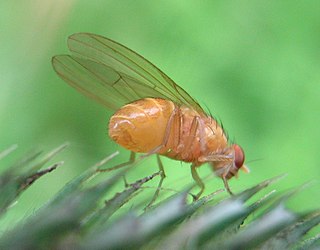Natural science organizations
| | This section is empty. You can help by adding to it. (November 2014) |
The following outline is provided as an overview of and topical guide to natural science:
Natural science – a major branch of science that tries to explain, and predict, nature's phenomena based on empirical evidence. In natural science, hypothesis must be verified scientifically to be regarded as scientific theory. Validity, accuracy, and social mechanisms ensuring quality control, such as peer review and repeatability of findings, are amongst the criteria and methods used for this purpose. Natural science can be broken into 2 main branches: life science, and physical science. Each of these branches, and all of their sub-branches, are referred to as natural sciences.
Natural science can be described as all of the following:
| | This section is empty. You can help by adding to it. (November 2014) |

Biology – The natural science that studies life. Areas of focus include structure, function, growth, origin, evolution, distribution, and taxonomy.

A chemist is a graduated scientist trained in the study of chemistry, or an officially enrolled student in the relevant field. Chemists study the composition of matter and its properties. Chemists carefully describe the properties they study in terms of quantities, with detail on the level of molecules and their component atoms. Chemists carefully measure substance proportions, chemical reaction rates, and other chemical properties. In Commonwealth English, pharmacists are often called chemists.
The following outline is provided as an overview of and topical guide to chemistry:
Physical science is a branch of natural science that studies non-living systems, in contrast to life science. It in turn has many branches, each referred to as a "physical science", together is called the "physical sciences".
The following outline is provided as an overview of and topical guide to physics:

The following outline is provided as an overview and topical guide to space science:

Theoretical chemistry is the branch of chemistry which develops theoretical generalizations that are part of the theoretical arsenal of modern chemistry: for example, the concepts of chemical bonding, chemical reaction, valence, the surface of potential energy, molecular orbitals, orbital interactions, and molecule activation.

Natural science is one of the branches of science concerned with the description, understanding and prediction of natural phenomena, based on empirical evidence from observation and experimentation. Mechanisms such as peer review and repeatability of findings are used to try to ensure the validity of scientific advances.

Biophysics is an interdisciplinary science that applies approaches and methods traditionally used in physics to study biological phenomena. Biophysics covers all scales of biological organization, from molecular to organismic and populations. Biophysical research shares significant overlap with biochemistry, molecular biology, physical chemistry, physiology, nanotechnology, bioengineering, computational biology, biomechanics, developmental biology and systems biology.

The following outline is provided as an overview of and topical guide to academic disciplines:
Chemical physics is a subdiscipline of chemistry and physics that investigates physicochemical phenomena using techniques from atomic and molecular physics and condensed matter physics; it is the branch of physics that studies chemical processes from the point of view of physics. While at the interface of physics and chemistry, chemical physics is distinct from physical chemistry in that it focuses more on the characteristic elements and theories of physics. Meanwhile, physical chemistry studies the physical nature of chemistry. Nonetheless, the distinction between the two fields is vague, and scientists often practice in both fields during the course of their research.

The following outline is provided as an overview of and topical guide to Earth science:
The following outline is provided as an overview of and topical guide to ecology:
The following outline is provided as a topical overview of science; the discipline of science is defined as both the systematic effort of acquiring knowledge through observation, experimentation and reasoning, and the body of knowledge thus acquired, the word "science" derives from the Latin word scientia meaning knowledge. A practitioner of science is called a "scientist". Modern science respects objective logical reasoning, and follows a set of core procedures or rules to determine the nature and underlying natural laws of all things, with a scope encompassing the entire universe. These procedures, or rules, are known as the scientific method.
The branches of science, also referred to as sciences, scientific fields or scientific disciplines, are commonly divided into three major groups:
The following outline is provided as an overview of and topical guide to biophysics:
The following outline is provided as an overview of and topical guide to applied science:
This glossary of biology terms is a list of definitions of fundamental terms and concepts used in biology, the study of life and of living organisms. It is intended as introductory material for novices; for more specific and technical definitions from sub-disciplines and related fields, see Glossary of cell biology, Glossary of genetics, Glossary of evolutionary biology, Glossary of ecology, Glossary of environmental science and Glossary of scientific naming, or any of the organism-specific glossaries in Category:Glossaries of biology.
Science is a systematic enterprise that builds and organizes knowledge in the form of testable explanations and predictions about the universe.
3 a: knowledge or a system of knowledge covering general truths or the operation of general laws especially as obtained and tested through scientific method b: such knowledge or such a system of knowledge concerned with the physical world and its phenomena